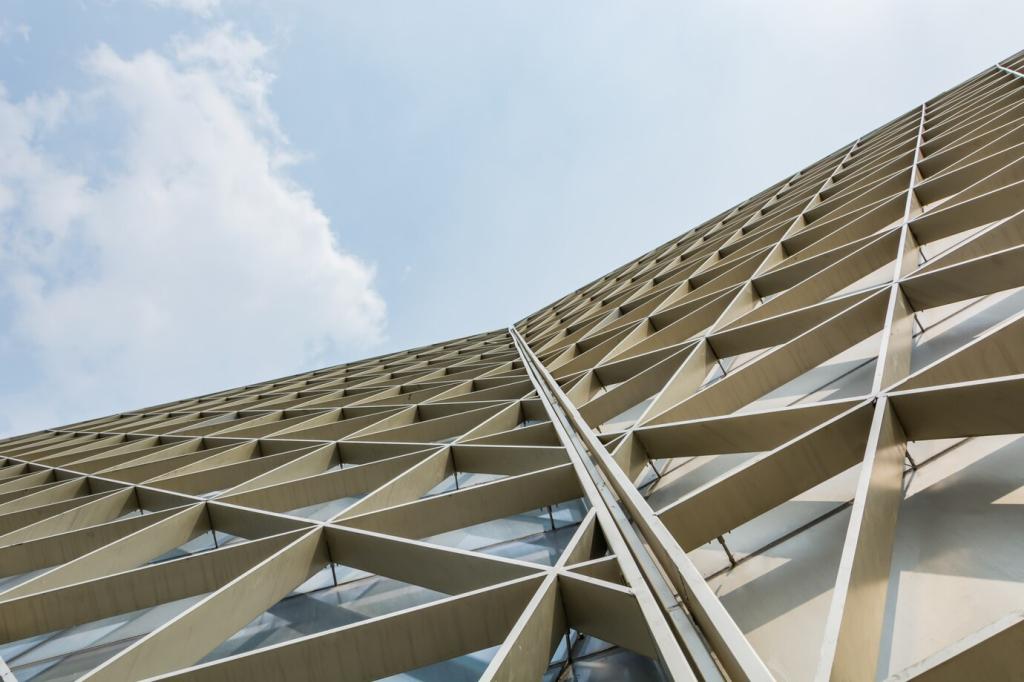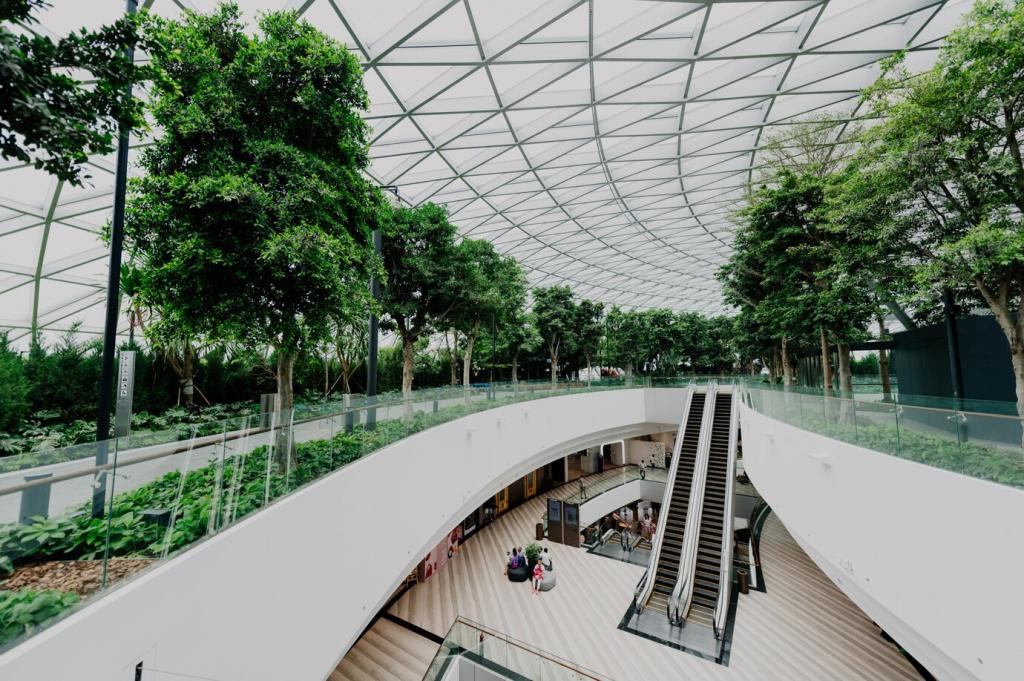Sustainable building materials are revolutionizing the way we construct our homes, offices, and urban spaces. By prioritizing the use of environmentally friendly resources, architects and builders are reducing the ecological footprint of built environments while enhancing overall health and comfort. This page delves deep into the principles, benefits, and popular choices for earth-friendly construction, offering insight into how conscious material selection can foster greener and more resilient communities.


Reduced Carbon Footprint
A significant advantage of choosing sustainable materials is the reduction in overall carbon emissions associated with construction processes. Conventional materials like concrete and steel account for a significant percentage of global CO2 outputs due to intensive energy requirements. In contrast, materials such as cross-laminated timber or sheep’s wool insulation store carbon naturally and require less energy to manufacture. These choices not only lower the immediate environmental impact but also contribute to the planet-wide efforts needed to combat climate change.

Improved Indoor Air Quality
Many traditional building materials off-gas harmful compounds, contributing to indoor pollution and health problems. Sustainable alternatives often forgo volatile organic compounds (VOCs) and are manufactured with health in mind. For example, clay plasters, natural fiber carpets, and low-emission paints help create indoor environments that are safer for occupants, reducing instances of respiratory issues and allergies. Enhanced air quality boosts comfort and productivity, making these materials desirable for homes, schools, and workplaces.
Engineered Wood Products
Engineered wood products like cross-laminated timber (CLT) and glulam are gaining traction for their structural reliability and low environmental impact. These materials utilize small-diameter wood or wood waste, binding them together to create large, strong panels and beams. In addition to sequestering carbon, engineered wood is lightweight, reducing transportation energy and costs. Their prefabricated nature also helps limit on-site waste, making them a preferred choice for sustainable frameworks that push architectural boundaries.
Rammed Earth Construction
Rammed earth is a time-honored building method revived in modern sustainable design. It involves compacting layers of locally sourced soil, sometimes stabilized with lime or cement, within formwork to create solid, thermal mass walls. Rammed earth buildings excel at temperature regulation, naturally keeping interiors cool in summer and warm in winter. The process creates minimal waste and leverages materials found on-site or nearby, minimizing both transportation emissions and the building’s ecological footprint.
Insulation from Natural Fibers
Insulation is critical for energy-efficient structures, and natural fiber products offer a sustainable alternative to conventional solutions. Materials such as sheep’s wool, hemp, and cellulose provide excellent thermal and acoustic performance while being biodegradable and non-toxic. These fibers are often sourced from agricultural by-products or renewable cycles, further reducing their environmental load. Natural fiber insulation supports moisture regulation and indoor air quality, contributing to healthier, longer-lasting buildings.

Thermal Mass Benefits
Materials with high thermal mass—such as concrete, brick, and, notably, rammed earth—can store heat energy and release it slowly, stabilizing indoor temperatures. This capability reduces reliance on active heating and cooling, thereby shrinking energy use. Sustainable alternatives like adobe or natural stone serve the same function while being less energy-intensive to source and manufacture. By integrating thermal mass thoughtfully, designers can create comfortable buildings that adapt passively to local climates.
Cool Roofing Materials
Cool roofing materials are engineered to reflect more sunlight and absorb less heat than standard roofing products. This innovative approach helps reduce urban heat island effects and lowers air conditioning demand during hot periods. Tiles made from recycled content, metal, or even light-colored clay can be selected for their high solar reflectance and emissivity. Not only do cool roofs contribute to energy efficiency, but they also extend the life span of roofing systems by minimizing thermal stress and degradation.
Insulated Wall Systems
Well-insulated walls are the cornerstone of energy-efficient buildings, and sustainable materials are central to these high-performing assemblies. Structural insulated panels (SIPs), straw bale walls, and natural fiber batts deliver superior thermal resistance and air tightness. These systems work intandem with efficient windows and doors to create robust building envelopes. By drastically reducing heat loss and gain, insulated wall systems supported by green materials have a direct impact on both energy conservation and occupant comfort.
Innovations and Emerging Technologies
Biocomposites blend natural fibers—like flax, jute, or hemp—with biodegradable or recycled polymers to create materials that rival the strength and durability of conventional products. Used for everything from wall panels to furniture, biocomposites boast low embodied energy and are often completely renewable or recyclable. Their manufacture supports local agriculture and can even contribute to carbon sequestration. As research progresses, expect to see more biocomposites replacing plastics and synthetics in mainstream building markets.

FSC certification is a globally recognized standard for sustainably managed forests and wood products. Chairs, framing lumber, and flooring stamped with the FSC logo guarantee that sourcing did not lead to deforestation, habitat loss, or illegal logging. The system also supports fair labor practices and respects indigenous rights. By choosing FSC-certified wood, stakeholders participate in maintaining healthy forests and ecosystems, making it one of the most impactful certifications in sustainable construction.

Economic and Social Impacts
The shift toward sustainable materials fuels the growth of green industries and associated employment opportunities. From manufacturing bio-based insulation to installing solar tiles, these jobs often require specialized skills, supporting workforce development and education. The renewable energy and efficient construction sectors in particular are growing faster than conventional counterparts. By investing in sustainable building, communities cultivate new career pathways and resilience in a rapidly changing economy.

Overcoming Challenges in Adopting Sustainable Materials
01
Many decision-makers and consumers continue to perceive sustainable materials as prohibitively expensive or less effective than traditional options. These outdated notions persist despite ample evidence to the contrary, often due to lack of information or exposure. Educational initiatives, demonstration projects, and transparent cost analyses are key to shifting perceptions. As success stories accumulate and leaders champion green construction, market attitudes inevitably turn more favorable.
02
Incorporating innovative materials into building projects often demands new technical knowledge and skills. Architects, engineers, and laborers may require targeted training to effectively design with and install sustainable options. Industry partnerships with educational institutions and investment in professional development ensure that the workforce is well-equipped for these advances. Overcoming technical barriers is not only a matter of product availability but also of empowering people to innovate confidently within the green building movement.
03
The availability of sustainable building materials can be limited in certain regions, particularly where supply chains are focused on conventional products. This can create barriers for builders seeking green alternatives, as sourcing may involve higher transportation costs or longer lead times. Strengthening local supply networks and incentivizing manufacturers to produce eco-friendly options helps alleviate access issues. Peer collaboration and tracking provenance can also enhance the reliability and transparency of sustainable supply chains.
